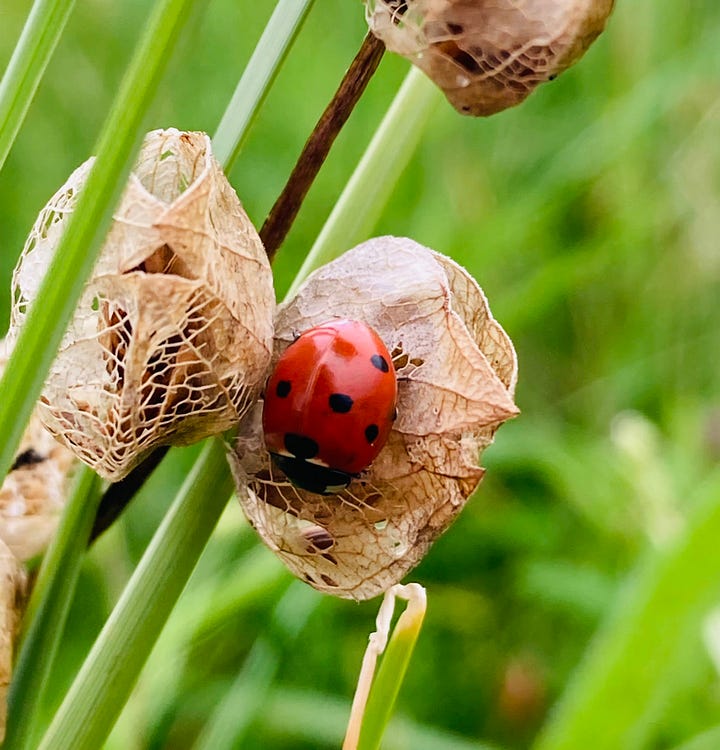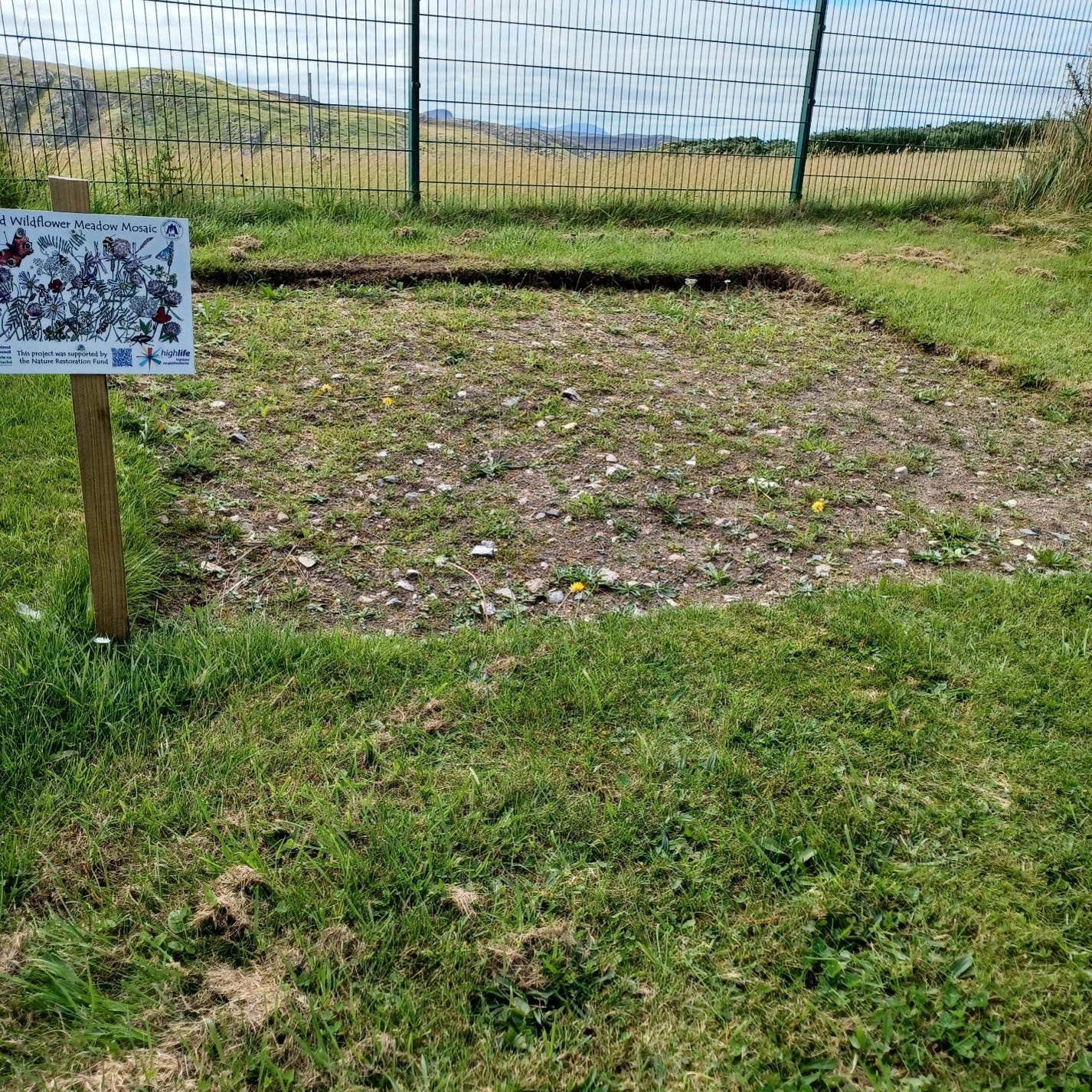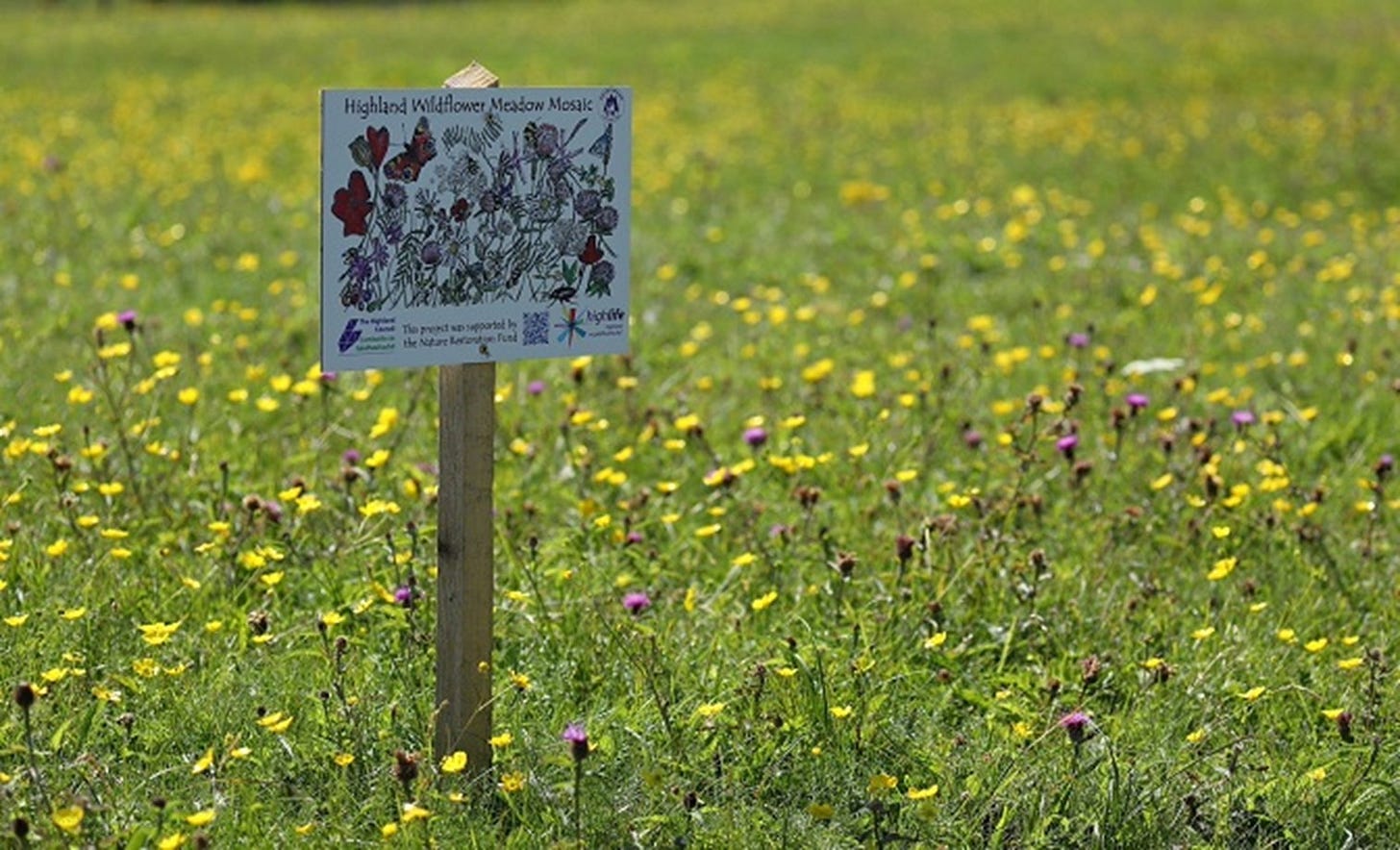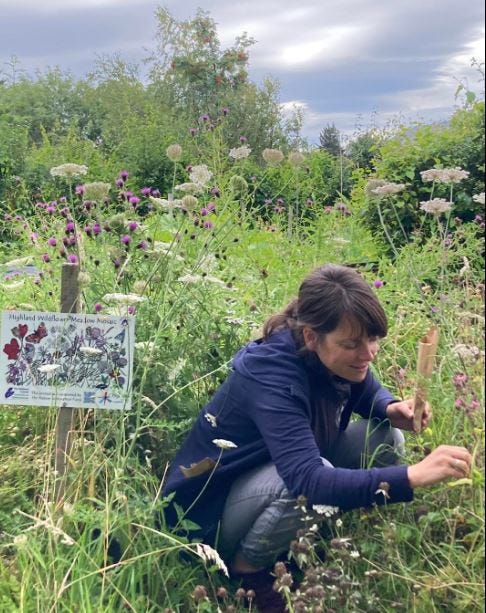More to Our Wildflower Areas Than Meets the Eye
Jenny zooms in on the wildflower patches and looks at their value beyond the blooms
Wildflowers are beautiful, an important habitat and a good source of pollen and nectar for invertebrates. Those pollinators in turn pollinate many other plants and that results in many food plants for us. But there is more to wildflower areas than this.
As part of our Highland Wildflower Meadow Mosaic project in 2023 I had some sites in my patch of Wester Ross be successful, but also several that looked a bit sad and a bit of a bourach with only the odd flower blooming last summer.
However, look a bit closer and the diversity of our wildflower sites is not just about the variety of colours and flower shapes that appeared during the summer.
The importance goes deep into the soil and into the roots, the nooks and crannies of the stems and leaves. Places to hide, to hold on to, to spin a web or lay eggs. Layers of shapes, of sun and shade and seeds to eat. Diversity is more than just the variety of species and what you first see.
Every single one of our 60 new wildflower sites created in the Highlands last year has hosted pollinators and usually the areas sit right beside the regularly mowed monoculture of green grass so you can see the contrast in texture and layers directly.
You can see the full list here:
Scything can maintain quite a bit of this structural diversity even when flowering time is over as it is not as precise, and you can leave areas. Leaving some of these nooks and crannies available for invertebrates and other creatures to overwinter and take shelter is almost as important as the flowers themselves. When I was collecting seeds in the late summer and autumn, I found a milliped curled up in a poppy seed head, spiders in amongst dead stems and multiple ladybirds inhabiting the seed husks of yellow rattle.


This year I know that the sites are going to continue to be diverse in the less obvious way I am describing and that they will also hopefully be more spectacular visually and give a nectar source spread through the season. To add belts to braces, I added more seed last autumn to some sites, making seed balls with help from volunteers at community workshops funded by the Highlands and Island Climate Hub.
I will also be giving some of my Wildflower Meadow Mosaic sites some TLC this spring, removing some of the grass to maintain diversity. And when the flowers die back at the end of the season, I will know they are harbouring more than colour and scent.
If you find yourself being a bit disappointed in your own wildflower patch, think about the alternative. Go and sit and watch your wildflower habitat for a while. Is there a harvestman scavenging at the base of the old flower stems or a queen bee hibernating in amongst them? Is it better than just grass? Is more living in it than there would have been? I think it is very likely to be doing better than you realise so keep going with it!
Jenny Grant is the dedicated High Life Highland Countryside Ranger for Wester Ross, operating out of Ullapool Library. With a profound commitment to community engagement, Jenny concentrates her efforts on building connnection between the community and their natural environment. Her work is driven by an unwavering passion for the natural world, encompassing a broad spectrum of interests from local flora and fauna to broader ecological systems. Jenny views learning about the Highland's unique ecology as a lifelong journey, one that she enthusiastically shares with others. Her role not only involves conservation efforts but also educating and inspiring the public about the importance of preserving the natural beauty and biodiversity of the Highlands.











Fascinating post thanks